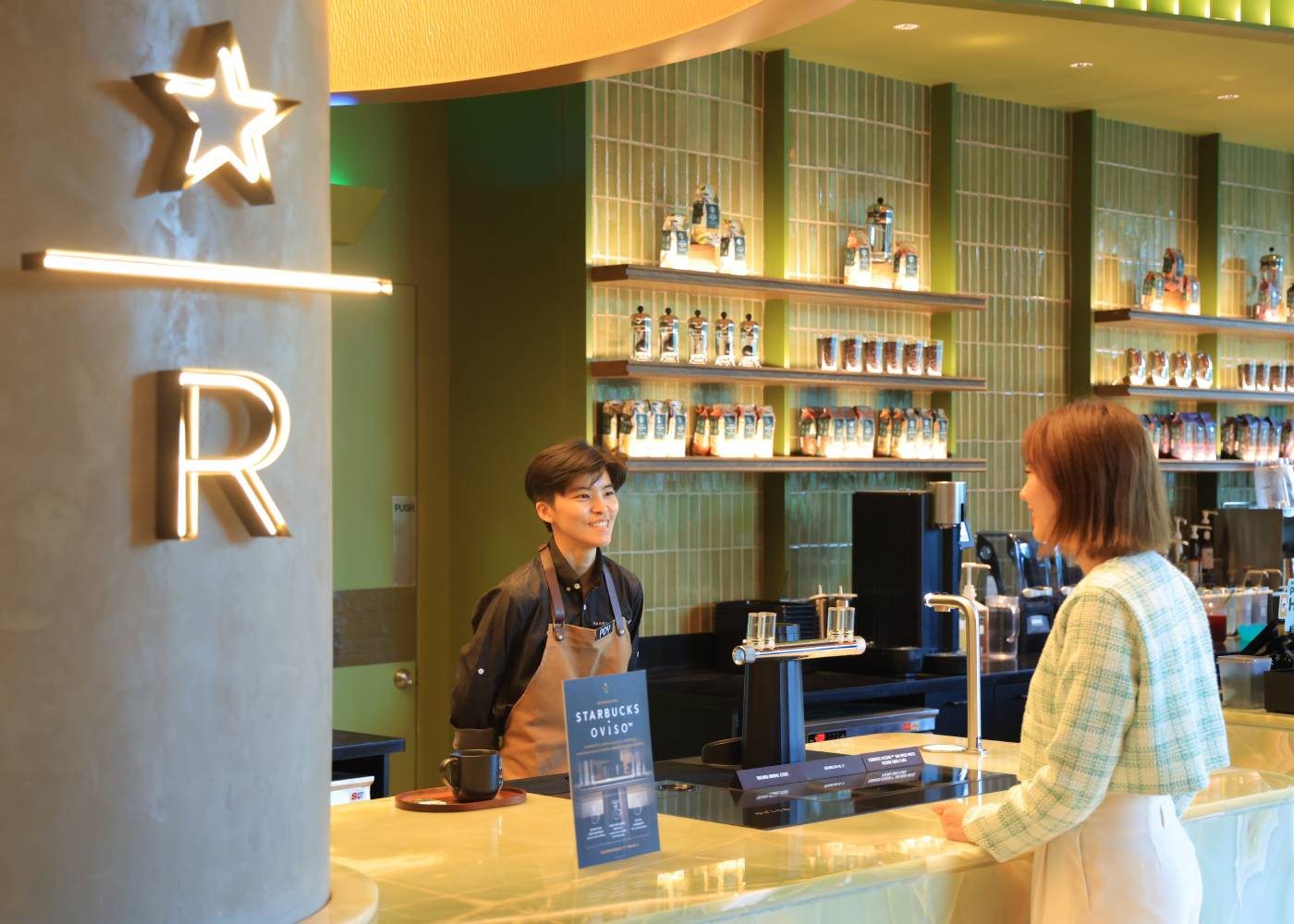Luna Menstrual Disposal Station: The Game-Changer for Women’s Restrooms
Published on October 24, 2024 | by DSGN arcHive
We chatted with the Luna design team to delve into their creative process and explore how they crafted the user journey
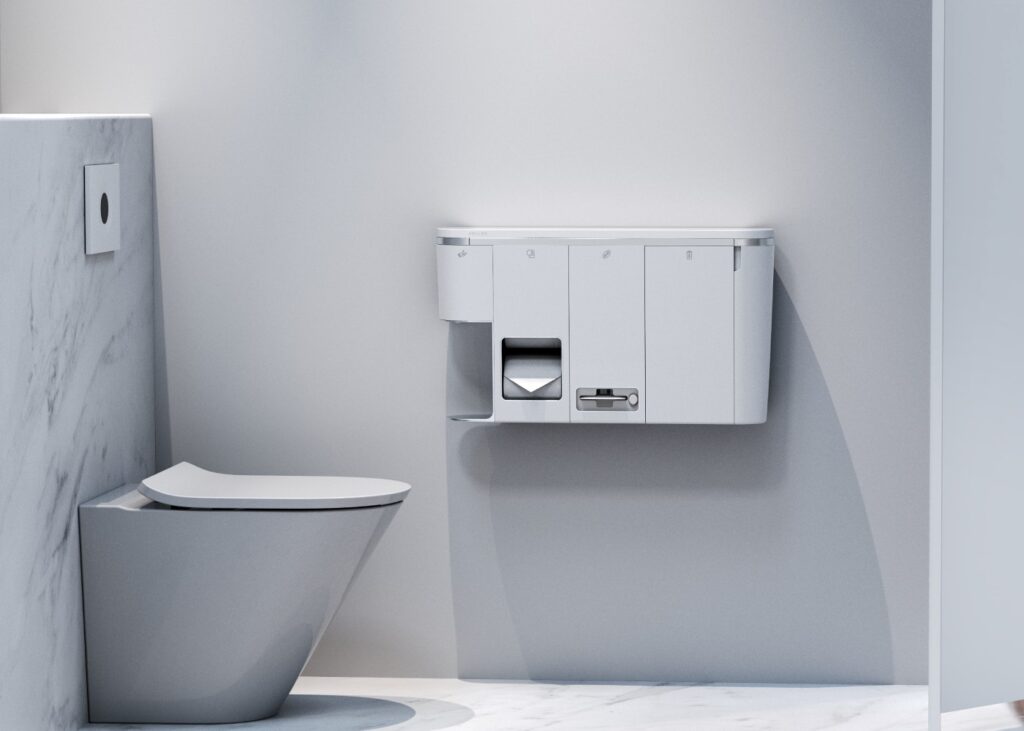
What if public restrooms could finally cater to the unique needs of women, especially during their menstrual cycles? Well, enter Luna—a game-changing menstrual disposal station that’s set to transform the restroom experience. Designed with thoughtful attention to user feedback, Luna not only addresses common frustrations but also makes public restrooms cleaner, more comfortable, and ultimately, more welcoming. With its sleek and user-friendly design, it’s paving the way for a new standard in public hygiene.
Moreover, this forward-thinking approach didn’t go unnoticed—it earned an SG Mark Special Mention at the prestigious Singapore Good Design Awards 2024. We had the opportunity to sit down with the brilliant minds behind the project from Kohler Co, Kohler Design, and Trigger Design, to uncover the story behind Luna, the design process, and what it took to bring this vision to life. So, read on for the inside scoop!
Luna Menstrual Disposal Station
1. What inspired the creation of the Luna menstrual disposal station?
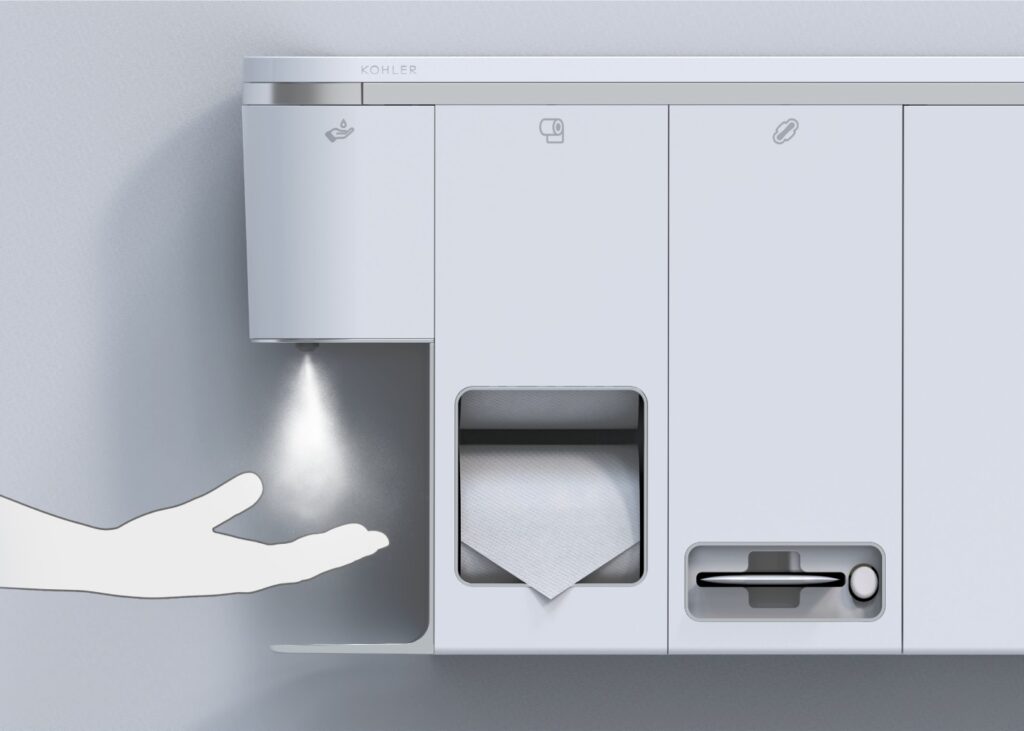
It began with a casual discussion about the general hygiene of public restrooms.
While it was universally acknowledged that men’s restrooms often have a reputation for being unclean, many men were surprised to learn that women’s restrooms can be equally, if not more, unhygienic. This sparked a broader dialogue, where both groups shared personal experiences, identified common shortcomings in public restroom facilities, and explored potential areas for improvement. It became a meaningful exchange, with both men and women feeling motivated to enhance the overall quality and experience of public restrooms, ultimately improving quality of life.
2. User testing played a major role in Luna’s development. Can you share some insights into how feedback from women shaped the design and functionality of the station?
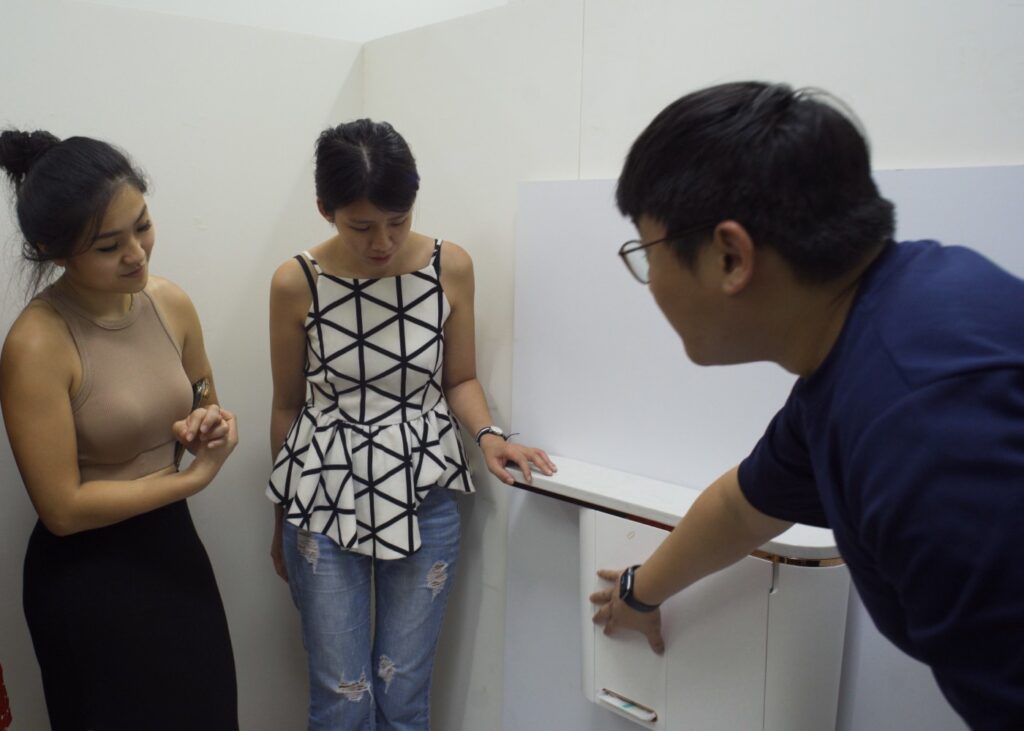
We developed a mock cubicle setup and conducted user interviews with women to gain deeper insights into their personal experiences. This approach was critical as it allowed us to observe subtle details, document their journey, and ultimately categorize the underlying needs into four key areas:
- Hygiene: Maintaining cleanliness and eliminating unpleasant odors.
- Comfort: Enhancing ergonomics and ensuring easy access to bins
for sanitary pad disposal. - Power of Space: Offering additional surface space for personal items such
as phones and bags. - Functionality and Thoughtfulness: Improving amenities to ensure a seamless, pleasant restroom experience from start to finish.
One of the early design features we believed would be well-received was an automatic sanitizer that periodically sprayed mist to clean surfaces. However, during the interviews, we were surprised to find that none of the women found this appealing, as they were concerned the mist would land on their personal items, creating additional inconvenience. This served as an important reminder that, as designers, we must always prioritize the needs and preferences of the users, rather than our own assumptions.
3. One standout feature is the antimicrobial top. How does this surface enhance hygiene while also providing practical space for women’s belongings?
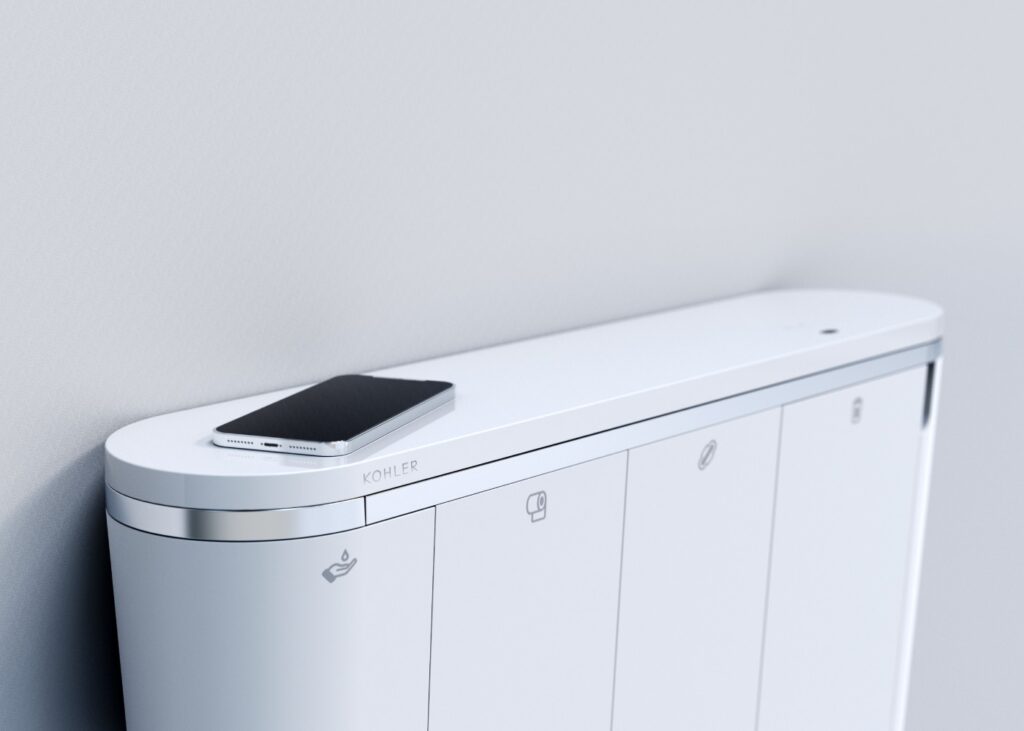
During our user interviews, many women shared that when there is no platform behind the toilet, they often hang their bags on the hook behind the door while changing or putting on sanitary pads. This frequently requires them to stretch and fumble in their bags, causing discomfort and inconvenience. This insight highlighted an opportunity to introduce a clean, spacious platform where users can easily place their belongings. To further enhance convenience, we centralized all necessary amenities below the platform, creating a more streamlined and user-friendly experience.
4. The gesture-activated sensor for the dispenser sounds like a game-changer. How does this technology improve both hygiene and the overall user experience?
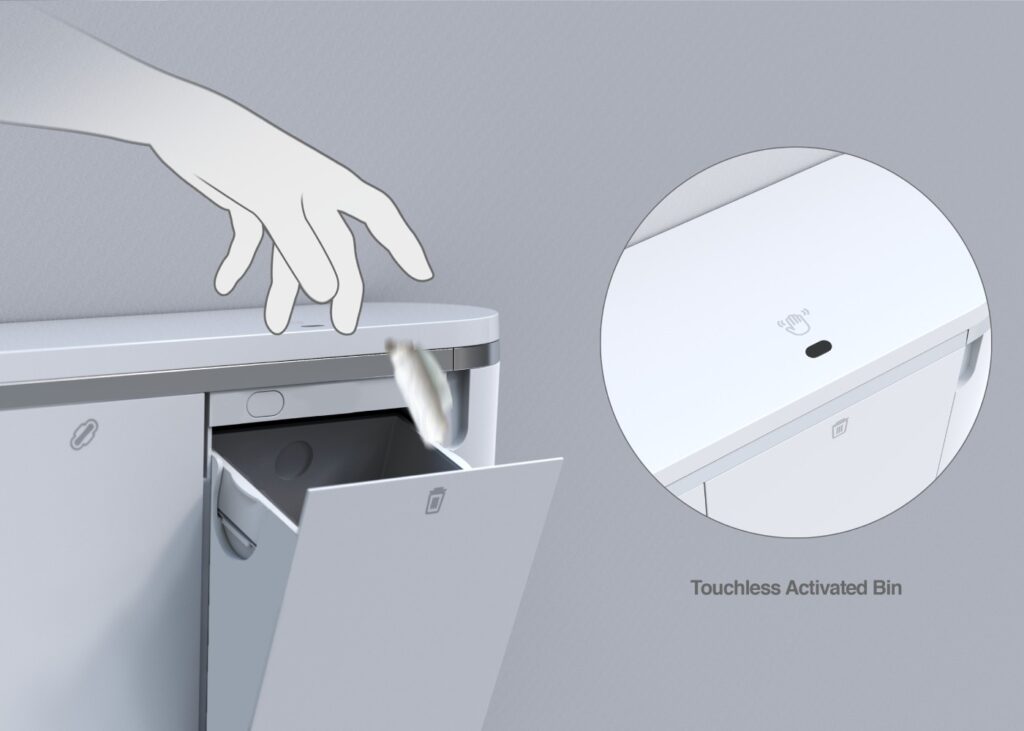
The current solution in commercial toilet cubicles—a standard bin—was described by users as dirty, messy, and unhygienic. Many women expressed frustration with having to turn around to dispose of sanitary pads, which caused back strain and exposed them to the unsightly mess left by previous users. Additionally, they emphasized a strong preference for not touching any surfaces, particularly the bin itself.
To address these concerns, we implemented a gesture-activated sensor, allowing for hands-free disposal. Through extensive testing, we fine-tuned the sensor’s sensitivity to ensure it operated effectively without false triggers upon entering the cubicle. This feature was highly appreciated by users, as it eliminated the need to strain their backs or encounter unsanitary conditions when discarding waste.
5. How does Luna's modular design allow for flexibility and adaptability in various restroom interiors?

Apart from addressing the needs of the ladies, Luna is also thoughtfully designed with developers’ needs in mind. It is composed of four key sections, a touchless bin, a sanitary pad dispenser, toilet paper holder and a sanitizing module at the end.
Each section is modular and can be easily added or removed to suit the specific context, accommodating varying traffic flow and usage patterns. Additionally, Luna’s ambidextrous design allows for flexible installation on either side of the cubicle.
6. Hygiene is clearly a key consideration in the design. Could you elaborate on how the touchless disposal system and other elements work together to promote better hygiene practices in public restrooms?

Each module in Luna is strategically positioned to enhance the overall experience for women while in the cubicle. These placements were informed by user testing, where the ladies shared their needs and concerns.
The bin is placed furthest from users to minimize visibility of waste from previous occupants, addressing a common discomfort. The toilet paper holder is positioned closest, as it is the most frequently used amenity, while the emergency sanitary pad dispenser ensures immediate access when needed. Additionally, the sanitizing mist feature has been well-received, as it allows users to conveniently clean their hands, promoting a sense of cleanliness throughout the entire restroom experience.
7. What were some of the specific challenges or limitations you faced during development, and how were these addressed to ensure Luna met the needs of diverse users?
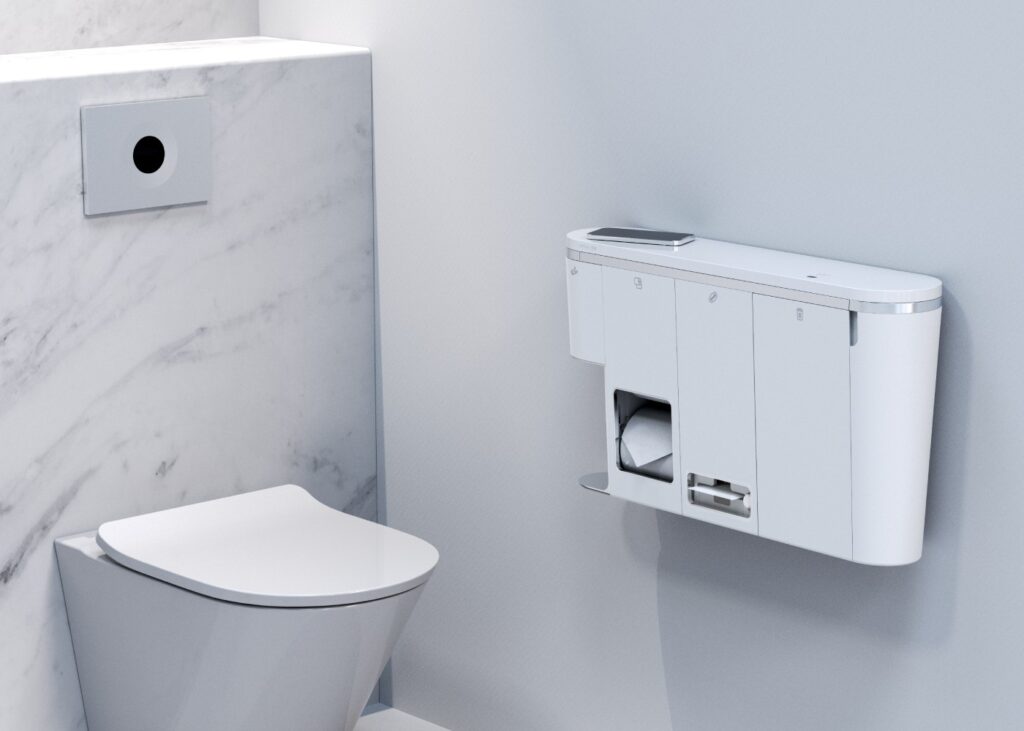
A critical aspect of the project was maintaining the comfort and privacy of female participants during the user interviews and roleplaying. We made sure they could pause the session at any time if they felt uncomfortable and assured them that their privacy would be respected, including not sharing any photos, blurred or unblurred, without their consent.
We also had to figure a way to maximize the power of space within the cubicle, constrained to a tight working area. Therefore, Luna was designed to be modular, ambidextrous and minimal.
Additionally, we needed to ensure that the solution would appeal to the mass markets in both the US and China. It was important that the product catered not only to female users but also to janitors responsible for its upkeep and developers incorporating it into their projects.
8. Looking ahead, how do you see the Luna menstrual disposal station evolving to continue improving women’s restroom experiences in the future?
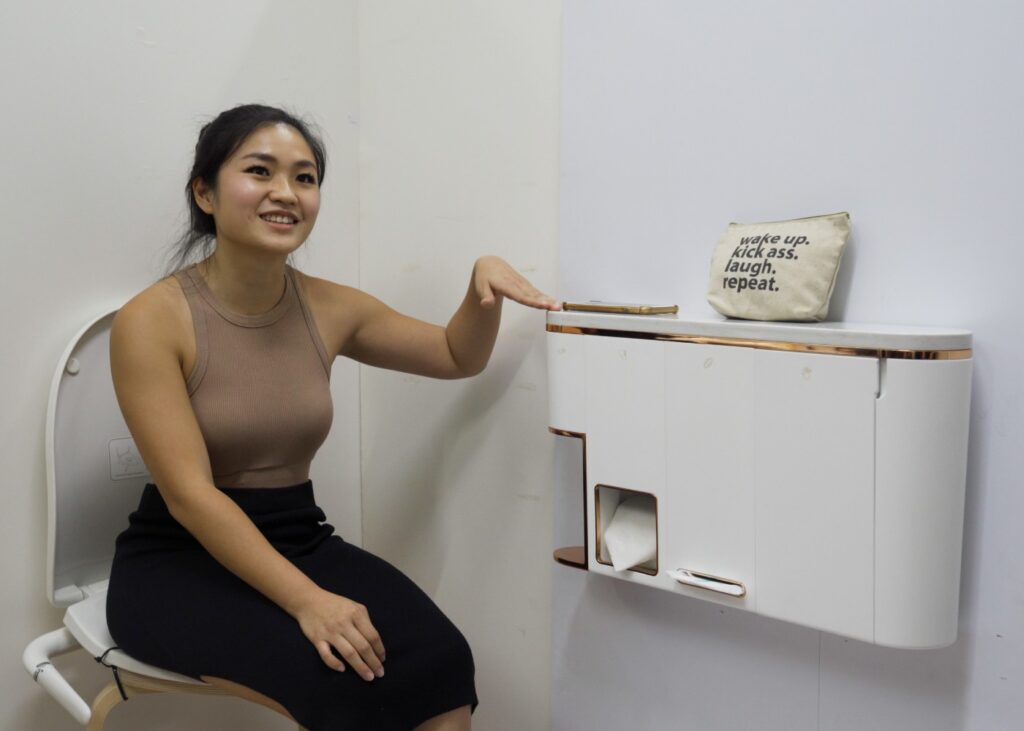
Luna, the world’s first female-centric commercial restroom product, is transforming the public restroom experience for women by offering a comprehensive solution that meets their unique needs, particularly during the menstrual cycle. By setting a new standard for inclusivity and care, Luna redefines what public restrooms should provide — essential amenities that cater to all races, genders, and identities.
In doing so, Luna paves the way for a more inclusive and equitable environment, driving a positive shift in how communities perceive and experience public spaces.
A huge thank you to the designers for sharing their invaluable insights with us. Ladies, if dealing with public restrooms during your period has always been a struggle, Luna is here to change that. We can’t wait to hear about your experience—feel free to drop us a DM at archivedsgn@gmail.com
If you’re a designer with a standout project ready to make its mark, now’s your chance! Enter the SG Good Design Awards and let your work shine in the spotlight—click the link to find out more!
Wondering what we’re up to next?
Give us a follow and stay in the loop!
About DSGN arcHive
DSGN arcHive is your exclusive key to unveiling the enigmatic essence of a city, all filtered through the prism of design. Far from the ordinary tourist paths. We reveal the city’s architectural marvels, urban intricacies, cultural tapestry, and eco-conscious revolutions that mold its distinctive soul. With us, you’re invited to savor the metropolis in an entirely chic and sophisticated light, a city that’s far more than what meets the eye.
Copyright © 2025 DSGN arcHive




